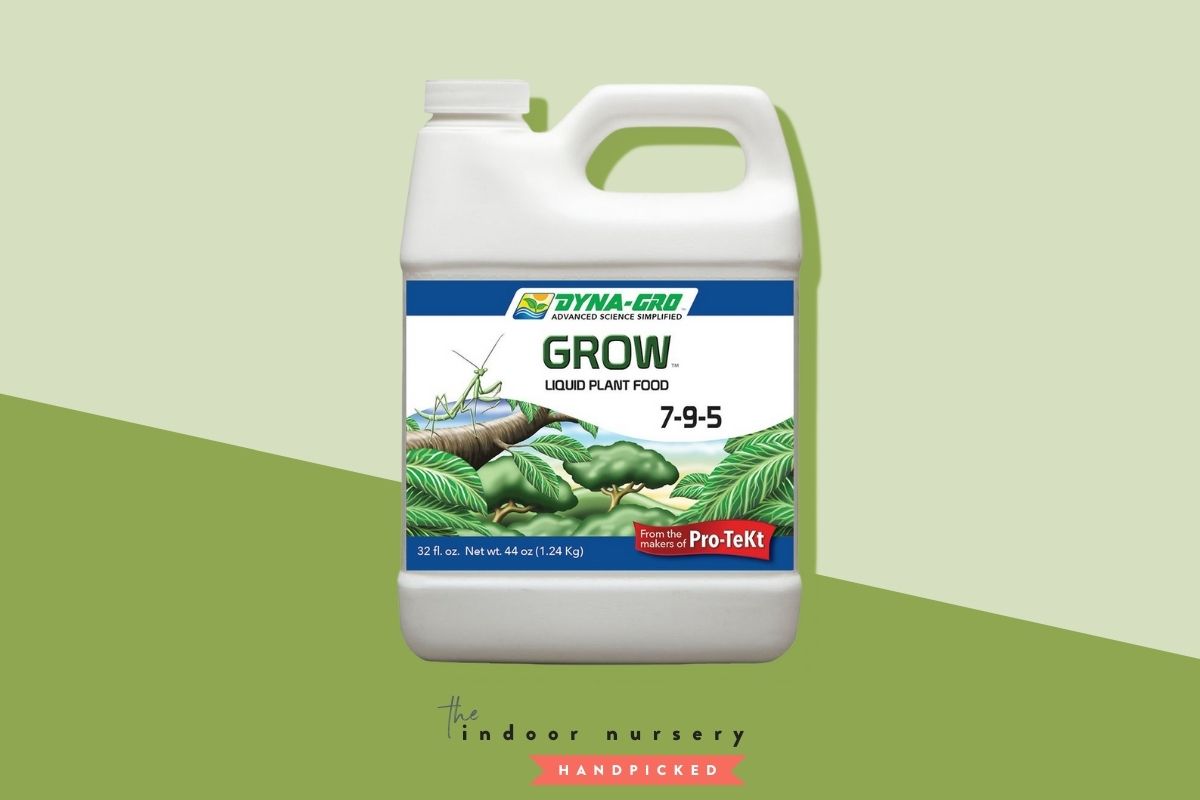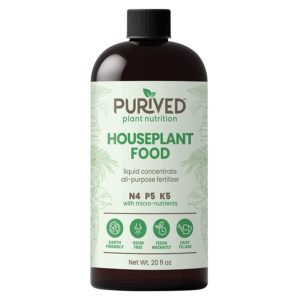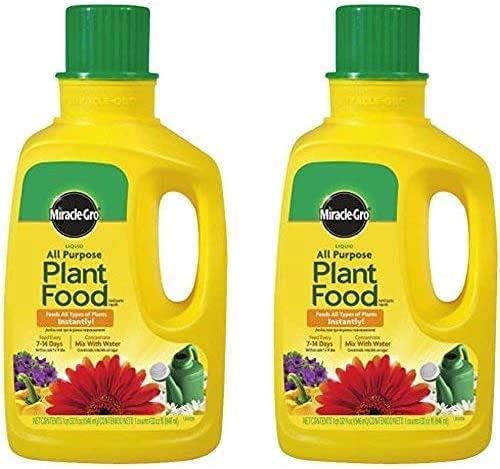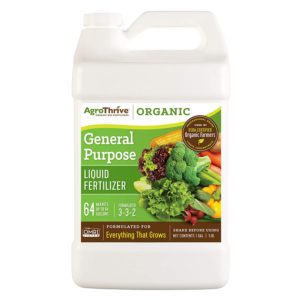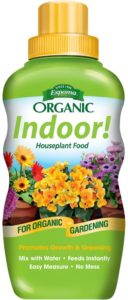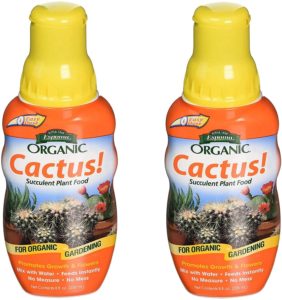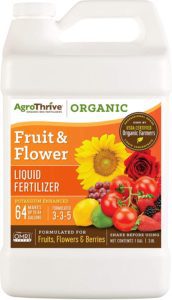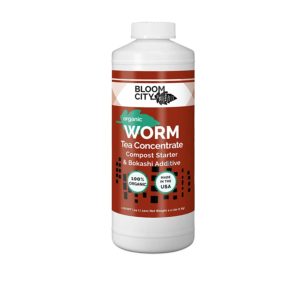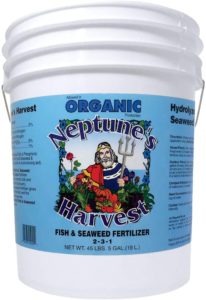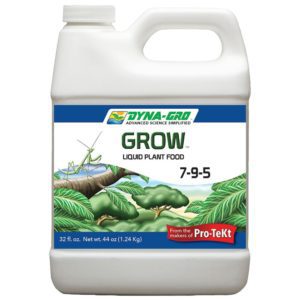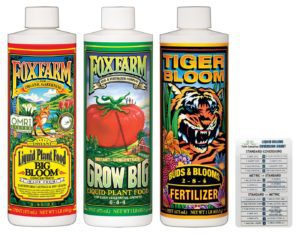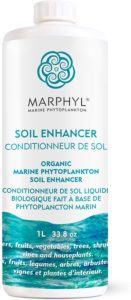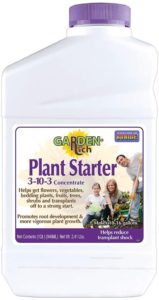🧪 Our review process
Our testing team independently researches, tests, and recommends the best products to help keep your houseplants absolutely thriving. Learn more about our testing and review process here.
There are just about as many liquid fertilizers out there as stars in the sky. But which one is best for your plants? Well, that’s what we’re here to figure out.
We’ve reviewed a range of the most loved liquid fertilizers for indoor plants and chosen the best of the best, just for you.
When choosing these liquid plant fertilizers, we considered those based with NPK ratios suited to all stages of plant growth, microorganisms that support healthy soil, and micronutrients for balanced nutrition.
Here are our recommendations.
The best liquid fertilizer for indoor plants
1. Best all-around fertilizer for indoor plants: Purived Liquid Fertilizer for Indoor Plants
key specs: 20 fl oz | NPK ratio: 4-5-5 | makes over 50 gallons of prepared fertilizer
For quick feeding, this liquid houseplant fertilizer from Purived is an excellent all-around choice. It contains all of the major plant nutrients in a well-balanced profile, plus all seven essential micronutrients. The moderate percentage of nutrients in this concentrated fertilizer ensures that it won’t burn your houseplants, but will still deliver everything they need. This product is so good, it also earned our vote for best fertilizer for indoor plants with a balanced profile in our overall guide to fertilizers for indoor plants. With Purived’s money-back guarantee (if your plants don’t love it, send it back), this product can’t disappoint!
Pros
- Complete nutritional profile including essential micronutrients will make all of your houseplants happy
- NPK is well-suited to a range of uses, from greenhouse gardening, to hydroponics, container plants and outdoor use
- Use as foliar feed, soil drench, or add direct to flowing water systems
- 100% money back guarantee
Cons
- The liquid is a crazy neon green color! For an all-natural, odor-free product, the color makes you wonder what’s in it
2. Best bargain liquid fertilizer for indoor plants: Miracle-Gro All Purpose Plant Food
key specs: 2 x 32 oz bottles | NPK ratio: 12-4-8 | both bottles make 383 gallons of prepared fertilizer
Budget indoor gardeners will swoon over this all-purpose package deal from Miracle Gro. Designed to instantly give plants a boost with its nitrogen-rich nutrient profile, Miracle Gro Indoor Plant food is a synthetic fertilizer suited to indoor and outdoor use on potted houseplants, raised beds, outdoor gardens, and more. It contains micronutrients iron, manganese and zinc to back up the essential nutrients and support lush foliage and root growth.
Be careful though. The high nitrogen content in this synthetic fertilizer can easily burn plants if applied in abundance or too early in your plant’s growing season. For the price of this fertilizer, you’ll probably spend more money on postage than you paid for the product if you participate in the money back guarantee. It’s that good of a deal!
Pros
- Apply directly to plants in low quantity (no need to mix with water) or dilute and apply with your watering schedule
- Mild, balanced NPK instantly gives all of your indoor plants a nutrient boost while minimizing the risk of fertilizer burn
- Money back guarantee.
Cons
- Not advised for foliar feeding, since the product is toxic to pets and kids
- Money back guarantee doesn’t account for postage
3. Best organic liquid fertilizer for indoor plants: AgroThrive All Purpose Organic Liquid Fertilizer
key specs: 128 oz | NPK ratio: 3-2-2 | makes 43 gallons of mixed organic fertilizer
If you’re looking for the all-around best organic fertilizer for your indoor garden, this pick from AgroThrive is a must-have for both indoor and outdoor plants. Certified by OMRI, WSDA (Washington State Department of Agriculture), and the CDFA (California Department of Food and Agriculture) for organic use, it’s not a stretch to say this water-soluble fertilizer is agro-organic 😉.
This plant food is not only an excellent choice for feeding healthy, organic edible plants, but it stands out amongst other organic fertilizers by ensuring lasting nutrition. Dilute with water and fertilize indoor plants every 1-2 weeks for incredible plant growth, healthy foliage, and robust roots.
Pros
- Produced by the progressive digestion process that breaks down organic ingredients to a simple, easy-to-absorb molecular structure
- This organic fertilizer is REALLY organic: OMRI, CDFA, and WSDA certified for Organic use, backed by Amazon’s Climate Pledge Friendly seal
- Contains 70% fast release nutrients and 30% slow release nutrients for stable, long-term plant nutrition
- Suitable for foliar feeding, soil-drench, hydroponics, and other fertilizing systems
Cons
- Less of a con than an advisory; this fertilizer is SMELLY 💩
- One of the more expensive liquid fertilizer options in this guide
4. Best well-balanced liquid fertilizer: Cool Mist U4. best well-balanced liquid fertilizer for indoor plants: Epsoma Organic Indoor Houseplant Food
key specs: 8 oz | NPK ratio: 2-2-2 | mixes into 6 gallons total of fertilizer
Most indoor gardeners (and gardens!) will benefit the most from a fertilizer with a balanced ratio of essential nutrients that will nourish a wide range of indoor potted plants, from pothos to dracaena. This bottle from Epsoma caught our eye amongst the best indoor plant fertilizers with a balanced NPK analysis due to its broad profile of added microbes that improve soil structure and health – super essential for indoor plants! Use this indoor plant fertilizer to feed indoor plants every two to four weeks for abundant, sustainable foliage growth and healthy root systems.
Pros
- Mild 2-2-2 nutrient profile is easy to use, beginner-friendly, and hard to harm plants with, making it suitable to feed most indoor houseplants with
- Contains an impressive profile of microbes to improve soil structure
- Non-toxic, low odor and safe to use around pets and kids too
Cons
- Pricey and precious – it’s a little bottle and mixes into only 6 gallons total of fertilizer when following the recommended dilution
- Due to the microbes in this formula, this product does expire (typically within 1-2 years of purchase)
5. Best liquid fertilizer for indoor cacti and succulents: Espoma Organic Cactus Succulent Plant Food
key specs: 2 x 8 oz bottles | NPK ratio: 1-2-2 | high-quality and bonsai-friendly
Your succulents may be your least demanding houseplants, but they still appreciate a good dose of fertilizer, albeit a bit less often (1-2 feedings of this fertilizer per month) than your houseplants from tropical climates. This fertilizer offers a concentrated blend of nitrogen, phosphorus, and potassium from animal-based organic sources (poultry manure, bone meal, fish, and kelp are the stars in this blend), humic acid and a broad profile of beneficial soil bacteria designed to support healthy soil. Blend this fertilizer generously with water and use it on your aloe vera, jade, and favorite cacti too!
Pros
- Contains Epsoma’s signature microbe concoction that improve the quality of soil and the uptake of moisture by roots
- Added humic acid increases nutrient uptake, improves your succulents’ drought tolerance, and supports microbial activity in soil
- Low, relatively balanced NPK profile with a bit more phosphate and potassium supports sustainable plant cell growth and root stability
Cons
- Due to the added microbes, this fertilizer comes with an expiration date
- Pret-tee smelly TBH! Any spills will fill your space with the aroma of poultry manure
6. Best liquid fertilizer for indoor flowering plants: AgroThrive Organic Fruit and Flower Liquid Fertilizer
key specs: 1 gallon | NPK ratio: 3-5-5 | makes up to 65 gallons blended
At maturity, your indoor flowering plant needs a boost of phosphorus and potassium to support its blooms. This is also true of fruiting plants. AgroThrive’s OMRI-certified fertilizer will keep all of your mature fruiting and flowering plants healthy with its fast-acting formula of pre-digested nutrients derived from corn and fish. It’s NPK profile is designed to give you bigger, more bountiful blooms and abundant fruits and vegetables with results you can see in less than a week.
Pros
- Suitable to use as a foliar feed, soil drench, hydroponic amendment, and together with commercial fertilizing systems
- OMRI listed for organic use, Climate Pledge Friendly AND produced in a solar-powered facility 🌿
- Nutrients are extracted from the organic ingredients in this fertilizer using a progressive digestion process that’s good for soil
Cons
- It’s quite thick for a liquid fertilizer – about the consistency of a smoothie – and requires some additional care when diluting
7. Best liquid fertilizer for indoor herbs and vegetables: Bloom City Worm Tea Concentrate
key specs: 32 oz | high-strength plastic | mixed into about 192 gallons of prepared fertilizer
If you want the most abundant harvest of herbs and veggies this year, aim to create a living soil with this multi-purpose plant food instead of dousing your plants with strong chemical fertilizers and hoping for the best 🤞 This worm tea concentrate from nature’s very own soil scientists (worms!!) will boost the biological activity of your soil, promote your plants’ digestion of organic materials, and deliver results on par with any of the best fertilizer picks around when combined with the right potting soil. This worm tea makes a great indoor plant food and can be added to any soil media, including LECA, coco coir, traditional soil, and all kinds of hydroponic systems. The NPK ratio varies from batch to batch but is mild enough to be safely combined with other fertilizers.
Pros
- Tried and true ingredient (vermicompost!) for building and promoting microbial soil in a ready-to-use product
- Promotes digestion of organic material
- Highly versatile soil amendment appropriate for adding to any soil media with low-burn risk to plants; use on houseplants, lawns, gardens, or as a compost starter
- Safe to use together with your favorite fertilizers
Cons
- Not quite as good as making your own worm compost
- Microbes are only guaranteed for 12 months when this product is kept between 45°F and 75°F. Store between 50°-70°F to sustain microbial activity until expiration
PRO TIP: These make great gifts for plant lovers 😉
8. Best bulk liquid fertilizer for indoor plants: Neptune’s Harvest Organic Fish & Seaweed Fertilizer
key specs: 5 gallon bucket | NPK ratio: 2-3-1 | makes 1280 gallons of fertilizer when prepared as directed for houseplants
If you have a BIG indoor garden or are dreaming of planting one, look no further for your fertilizer needs than this crowd-pleasing kelp and fish emulsion fertilizer from Neptune Harvest. With nutrients derived from hydrolyzed fish and seaweed, this fertilizer’s 2-3-1 NPK profile is friendly for use on houseplants, lawns, vegetables and more. Save a whopping 50% per ounce on this product when buying in bulk without hesitation: It’s loved by gardeners, OMRI certified for organic gardening, and never expires.
Pros
- Indefinite shelf-life with no expiration date
- Save over 50% per oz with the 5 gallon purchase compared to buying the 36 oz container
- OMRI certified for organic use
- Stronger, more colorful foliage and more plentiful, fragrant and longer lasting blooms
Cons
- Difficult to pour: The container lid comes with a pop-up nozzle, but it’s only usable if you can lift 50 pounds while pouring the desired amount of liquid
9. Best synthetic liquid fertilizer for indoor plants: Dyna-Gro Grow Liquid Plant Food
key specs: 32 oz| NPK ratio: 7-9-5 | high-quality and bonsai-friendly
This fertilizer from Dyna-Gro is a trusted, results-proven formula with 40 years of science-driven product development behind it. Dyna-Gro Grow protects your plants from pests and disease by supporting strong plant cell wall growth, thanks to the addition of Dyna-Gro’s proprietary silicone supplement, Pro-Tekt®. Its high-nitrogen NPK analysis is bolstered by a broad range of trace elements to increase nutrient uptake by roots. One thing you won’t find in this fertilizer? Urea – a primary source of nitrogen used by many competitors that is unavailable for immediate uptake by plants and is known to burn some types of plants. As a result, this formula is safe for your African violets and orchids, and is an easy-to-use, year-round alternative to special fertilizers for these and other more sensitive plants.
Pros
- Does not contain Nitrogen from urea, which contributes to salt build up in soil and can burn plant roots
- Contains 10 trace elements, including calcium, magnesium, sulfur, and chlorine to support optimal plant growth
- Increases plants’ resistance to pests and diseases thanks to the addition of Pro-Tekt®, DynaGro’s proprietary silicone supplement that builds stronger plant cell walls
Cons
- Not much to complain about here!
10. Best package deal liquid fertilizer for indoor plants: FoxFarm Liquid Nutrient Trio Soil Formula: Big Bloom, Grow Big, Tiger Bloom
key specs: pack of 3 16 oz bottles | Big Bloom NPK: 0 – .5 – .7, Grow Big NPK: 6-4-4, Tiger Bloom NPK: , 2-8-4 | dosing varies
If you’re seeking a full-package fertilizer solution that supports your plants from seedling stage to maturity, seriously consider this offer from FoxFarm. It includes three fertilizers with specific nutrient profiles to feed your plants exactly what they need at all growth stages: the gentle Big Bloom for overall nutrition at all stages that supports multiple blooming cycles, Grow Big to help plants achieve peak vegetative growth, and finally, Tiger Bloom for mad flowering plants like you’ve never seen before.
Beginners beware, however! When used as directed, we recommend this trio for intermediate to advanced indoor gardeners. Gardening experience is required to identify the growth phases of your plants that signal it’s time to change fertilizers and keep up the feeding schedule. Do note that you’ll probably run out of Big Bloom midway through your growing season since it should be mixed in higher concentrations than the other products.
Pros
- Trio of super popular fertilizers from Fox Farm are specifically designed to work together throughout your plants’ growing season to support specific aspects of growth at all stages
- Supports multiple blooming cycles, lush vegetative growth, strong root regeneration, and nutrient cycling in soil
- Suitable to use on indoor and outdoor plants
- Detailed instructions for use are available both on the bottles and online
Cons
- Not great for beginners: Using all three fertilizers correctly throughout your plants’ growing season requires timing, patience, and ideally, some prior experience maintaining a feeding schedule
- You’ll probably run out of Big Bloom!
11. Best liquid fertilizer for soil health: Maryphyl Organic Soil Enhancer
key specs: 33.8 oz | NPK ratio: 2-0.1-3 | makes about 5.3 gallons of blended fertilizer
If you’re seeking a full-package fertilizer solution that supports your plants from seedling stage to maturity, seriously consider this offer from FoxFarm. It includes three fertilizers with specific nutrient profiles to feed your plants exactly what they need at all growth stages: the gentle Big Bloom for overall Plants get all of the attention when it comes to fertilizer. But think about this: Soil health is the #1 most influential factor in your plant’s uptake of nutrients from fertilizer. So why not pick a fertilizer that’s good for both plants and soil? This soil enhancer made from 100% phytoplankton is the answer. It’s completely non-toxic and OMRI certified for organic use in both the USA and Canada, so don’t worry about setting your kids and pets free to roam after fertilizing your houseplants with it. The low-phosphorus blend replenishes soil as plants grow and maintains a healthy pH level to keep soil microbes buzzin’. If Earth’s not happy, nobody’s happy 🌍
Pros
- Enhances soil fertility and OMRI certified for organic use
- Completely safe for indoor use – don’t worry about kids or pets munching on leaves after using this product
- Replenishes soil as plants grow by improving the nutrient uptake of available compounds and maintaining a healthy pH for important microbes
- Made of 100% phytoplankton harvested and packaged on Vancouver Island, BC, Canada
Cons
- May require combination with a more robust NPK fertilizer for indoor veggies and fruiting plants
12. Best liquid fertilizer for transplanting: Bonide Garden Rich Plant Starter
key specs: 1 quart | NPK ratio 3-10-3 | makes 10-16 gallons of prepared fertilizer
Moving is stressful, especially if you’re a plant 😭 Don’t worry though, help is available! This Plant Starter fertilizer from botanical-nutrition veteran Bonide is specially formulated for the transplant and re-potting process. It’s high in phosphorus, which promotes strong root development and supports vigorous bounce-back growth with the help of gentle amounts of nitrogen and potassium.
Pros
- Specifically formulated to help plants make a quick recovery from repotting and transplant stress
- High phosphorus NPK analysis is scientifically proven to improve root health
- Promotes root development and vigorous plant growth
- Great for using both indoors and outdoors
Cons
- Quite expensive for a niche product you may only use a couple times a year
- Less of a ‘con’ and more of a tip: For use during the growing season, add a sprinkle of slow release fertilizer in your plant’s new pot for best results
Our recommendations
| # | Preview | Product | Amazon rating | |
|---|---|---|---|---|
| 1. | best all-around liquid fertilizer for indoor plants: Purived Fertilizer for Indoor Plants | 4.5 | view on amazon | |
| 2. | best bargain liquid fertilizer for indoor plants: Miracle-Gro All Purpose Plant Food | 4.5 | view on amazon | |
| 3. | best organic liquid fertilizer for indoor plants: AgroThrive All Purpose Organic Fertilizer | 4.6 | view on amazon | |
| 4. | best well-balanced liquid fertilizer for indoor plants: Epsoma Organic Indoor Houseplant Food | 4.7 | view on amazon | |
| 5. | best liquid fertilizer for indoor cacti and succulents: Espoma Organic Cactus Succulent Plant Food | 4.7 | view on amazon | |
| 6. | best liquid fertilizer for indoor flowering plants: AgroThrive Organic Fruit and Flower Fertilizer | 4.6 | view on amazon | |
| 7. | best liquid fertilizer for indoor herbs and vegetables: Bloom City Worm Tea Concentrate | 4.7 | view on amazon | |
| 8. | best bulk liquid fertilizer for indoor plants: Neptune’s Harvest Organic Fish & Seaweed Fertilizer | 4.8 | view on amazon | |
| 9. | best synthetic liquid fertilizer for indoor plants: Dyna-Gro Grow Liquid Plant Food | 4.6 | view on amazon | |
| 10. | best package deal liquid fertilizer for indoor plants: FoxFarm Liquid Nutrient Trio Soil Formula: Big Bloom, Grow Big, Tiger Bloom | 4.7 | view on amazon | |
| 11. | best liquid fertilizer for soil health: Maryphyl Organic Soil Enhancer | 4.6 | view on amazon | |
| 12. | best liquid fertilizer for transplanting: Bonide Garden Rich Plant Starter | 4.6 | view on amazon |
Still unsure which liquid indoor plant fertilizer is best for you?
We get it – there are too many choices out there! How do you pick a single product out of the wide variety of best fertilizers we’ve recommended? The truth is, fertilizer isn’t a one size fits all product.
When choosing a liquid fertilizer, always remember that it will deliver the best results when paired with the right potting soil and a consistent watering schedule. When dosing fertilizer for your plant, learn how to adjust the quantity to suit its particular growing conditions.
Here are a few tips to get you started.
Types of liquid fertilizers
When it comes to liquid fertilizers for indoor plants, there are a few different types to choose from. Each has its pros and cons, so let’s take a closer look.
First up, we have synthetic fertilizers. These are usually made from inorganic chemicals and are designed to provide a quick burst of nutrients to your plants. The upside of synthetic fertilizers is that they’re usually inexpensive and easy to find. However, they can also be harsh on your plants and the environment, and they don’t provide the same long-term benefits as organic fertilizers.
Next, we have organic fertilizers. These are made from natural materials like compost, manure, or bone meal, and are a great choice for those looking to take a more eco-friendly approach to plant care. Organic fertilizers tend to release nutrients more slowly than synthetic fertilizers, which means they provide more long-term benefits for your plants. However, they can also be more expensive and harder to find.
Finally, there are specialty fertilizers. These are designed to provide specific nutrients that your plants may be lacking, such as iron or calcium. If you notice that your plants are showing signs of nutrient deficiencies, a specialty fertilizer may be just what they need. However, be careful not to overdo it – too much of a good thing can be just as harmful as too little.
So which type of liquid houseplant fertilizer is right for you? It depends on your preferences and the needs of your plants.
✔️If you’re looking for a quick and easy solution, a synthetic fertilizer may be the way to go.
✔️If you want to take a more sustainable approach, organic fertilizers are a great choice.
✔️And if your plants are showing signs of specific nutrient deficiencies, a specialty fertilizer may be just what the doctor ordered.
A note about slow release fertilizer
While slow-release fertilizers are more commonly found in granular or pellet form, there are some liquid fertilizers that are designed to release nutrients slowly over time.
These slow-release plant fertilizers typically contain compounds that gradually break down in the soil, releasing nutrients over several weeks or months. Some slow-release plant fertilizers are also formulated to release nutrients in response to changes in soil temperature or moisture levels.
The benefit of slow-release fertilizers is that they provide a steady, consistent supply of nutrients to your plants over an extended period of time, which can be especially helpful for plants with long growing seasons or slow nutrient uptake.
If slow-release liquid fertilizers aren’t readily available, gardeners can still achieve a similar effect by diluting regular liquid fertilizers with water. By using a lower concentration of fertilizer and applying it more frequently, you can provide a steady supply of nutrients to your plants without over-fertilizing them.
It’s important to note that slow-release fertilizers, whether liquid or granular fertilizer, should still be used according to the instructions and in moderation. Overuse of any fertilizer can harm your plants and damage the environment, so always use fertilizers sparingly and responsibly.
Plant nutritional needs
Choosing the right fertilizer for your indoor plants can be a bit tricky, but with a little bit of know-how, you can find the perfect one for your needs. Here are a few things to consider:
- Look at the N-P-K ratio. This stands for nitrogen, phosphorus, and potassium, which are the three most important nutrients for plant growth. Different plants have different requirements for each of these nutrients, so it’s important to choose a fertilizer with the appropriate ratio. For example, leafy plants like ferns and spider plants typically require a fertilizer with a higher nitrogen content, while flowering plants like orchids and African violets need more phosphorus and potassium.
- Consider your plant’s growth stage. Different stages of plant growth require different ratios of nutrients. For example, young plants need more nitrogen for leaf and stem growth, while mature plants require more phosphorus and potassium for flower and fruit production. Look for a fertilizer that is specifically formulated for your plant’s growth stage.
- Choose a fertilizer that’s appropriate for your plant’s type. Some plants are more sensitive to certain types of fertilizers than others. For example, cacti and succulents prefer a fertilizer with a lower nitrogen content, while ferns and other foliage plants do better with a higher nitrogen content.
- Consider your soil type. If your soil is already rich in certain nutrients, you may not need a fertilizer with high levels of those nutrients. On the other hand, if your soil is lacking in certain nutrients, you may need to choose a fertilizer that’s higher in those nutrients.
How to apply liquid fertilizers to plants
Once you’ve chosen the right liquid fertilizer for your indoor plants, it’s important to apply it correctly to ensure your plants receive the nutrients they need without causing harm. Here are a few tips:
- Dilute the fertilizer. Most liquid fertilizers need to be diluted with water before application to avoid burning your plants’ roots. Follow the instructions on the fertilizer label for the appropriate dilution ratio. As a general rule, indoor plants should be fertilized with a weaker solution than outdoor plants, as they have less access to nutrients in their environment.
- Apply the fertilizer during your regular watering schedule. You can add the diluted fertilizer to your watering can and apply it as you would water your plants. Alternatively, you can use a spray bottle to apply the fertilizer directly to the leaves of your plants. Be sure to apply the fertilizer evenly to avoid over-fertilizing some plants and under-fertilizing others.
- Don’t over-fertilize. Over-fertilization can cause damage to your plants, including burned roots, stunted growth, and even death. Always follow the instructions on the fertilizer label and avoid applying too much fertilizer or fertilizing too frequently. As a general rule, most indoor plants need to be fertilized every two to four weeks during the growing season, and less frequently during the dormant season.
- Monitor your plants for signs of over-fertilization. If you notice that your plants are showing signs of over-fertilization, such as yellowing leaves or stunted growth, reduce the frequency of fertilization and dilute the fertilizer even more. Alternatively, you can flush the soil with water to remove excess fertilizer.
Want to know which fertilizer works best? Read our plant fertilizer experiment to find out.
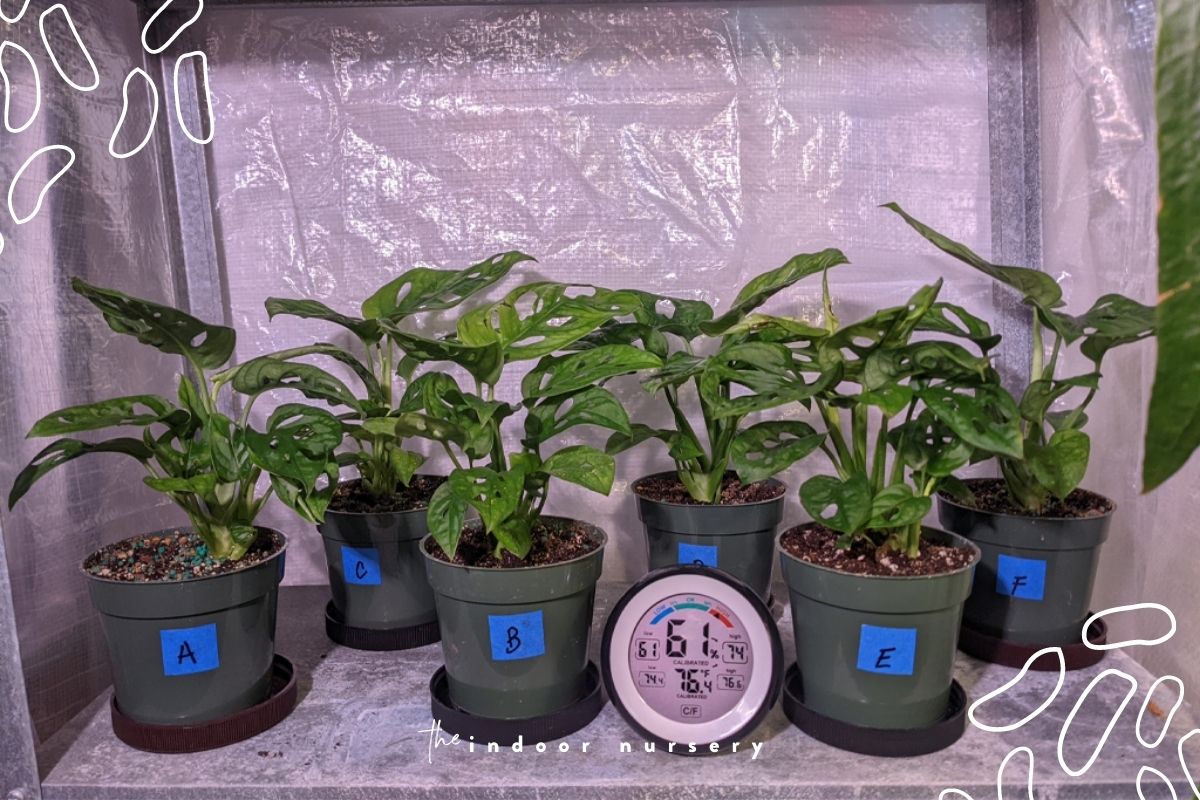
FAQs
If you’re not sure which of our recommendations will best suit your indoor gardening needs, here’s a quick breakdown of the most frequently asked questions about liquid houseplant fertilizer for indoor plants to take into consideration when making your final decision.
Q. Should I water my indoor plants before fertilizing?
Experts usually recommend adding liquid fertilizers and liquid plant food to your watering can for delivery to plants with your regular watering schedule (this is known as ‘soil drench’ in plant nerd lingo). This means you typically shouldn’t water your plants before applying fertilizer. Keeping your plant’s soil adequately moist will improve its uptake of whatever nutrients you feed it through diffusion and root interaction, so remember that a proper watering schedule is vital to your plant’s overall nutrition. PRO TIP: Indoor plants typically need liquid fertilizer delivered in more diluted form than outdoor plants, so keep this in mind before using an all-purpose fertilizer designed for raised beds or the like.
Q. How long do liquid fertilizers stay in soil?
It depends on a few factors. How long fertilizers stay in soil involves decomposition of compounds in the fertilizer, and the decomposition rates vary between types of fertilizers. Generally speaking though, synthetic fertilizers typically break down more quickly (unless they’re formulated for slow release), while organic fertilizers typically take from 2-4 weeks to break down in soil. Liquid fertilizer, in particular, is designed for quick uptake, and you’ll typically reapply it every few weeks to every month as your plant soaks it up from the soil.
Q. Do liquid fertilizers go bad?
Some do, and some don’t. Always check if the fertilizer you’re looking for expires before purchasing it, so you don’t end up with a barely-used, spoiled product at the end of your growing season! If you’re purchasing soil containing live microbes, you can bet that it will expire and also become less effective as it nears the expiration date. These fertilizers usually contain stabilized sugar to feed these soil-builders while they’re in solution, which will eventually run out. You can improve the shelf-life of most fertilizers that come with an expiration date by storing them in a cool, dry, and dark place.
Final thoughts
Whether you’re searching for that perfect NPK ratio for your plants or playing that fertilizer-and-potting-mix-and-match game, we hope this guide has inspired your journey. Go ahead and experiment with these excellent houseplant fertilizers in search of your own pick for the best fertilizer for indoor plants 🏆 We all have our favorites, after all. Enjoy feeding your plants and watching them thrive!
Sources
Shop our recommendations
- The Best Hydroponic Tower For Indoor Gardening
- 10 Best Worm Composter Bins For Easy Homemade Compost
- The Best pH Meter For Soil
- The 6 Best Dehumidifiers For Grow Tents
- The Best Complete Indoor Hydroponic Grow System
- 5 Best Grow Light Strips For Indoor Plants
- TESTED: Aerogarden vs Click and Grow Smart Garden
- Our *hands on* MARS HYDRO TSW 2000 review (with photos)
- 7 Best Hygrometers For Indoor Plants
- The Best Coco Coir For Your Plant’s Healthiest Root System Ever

